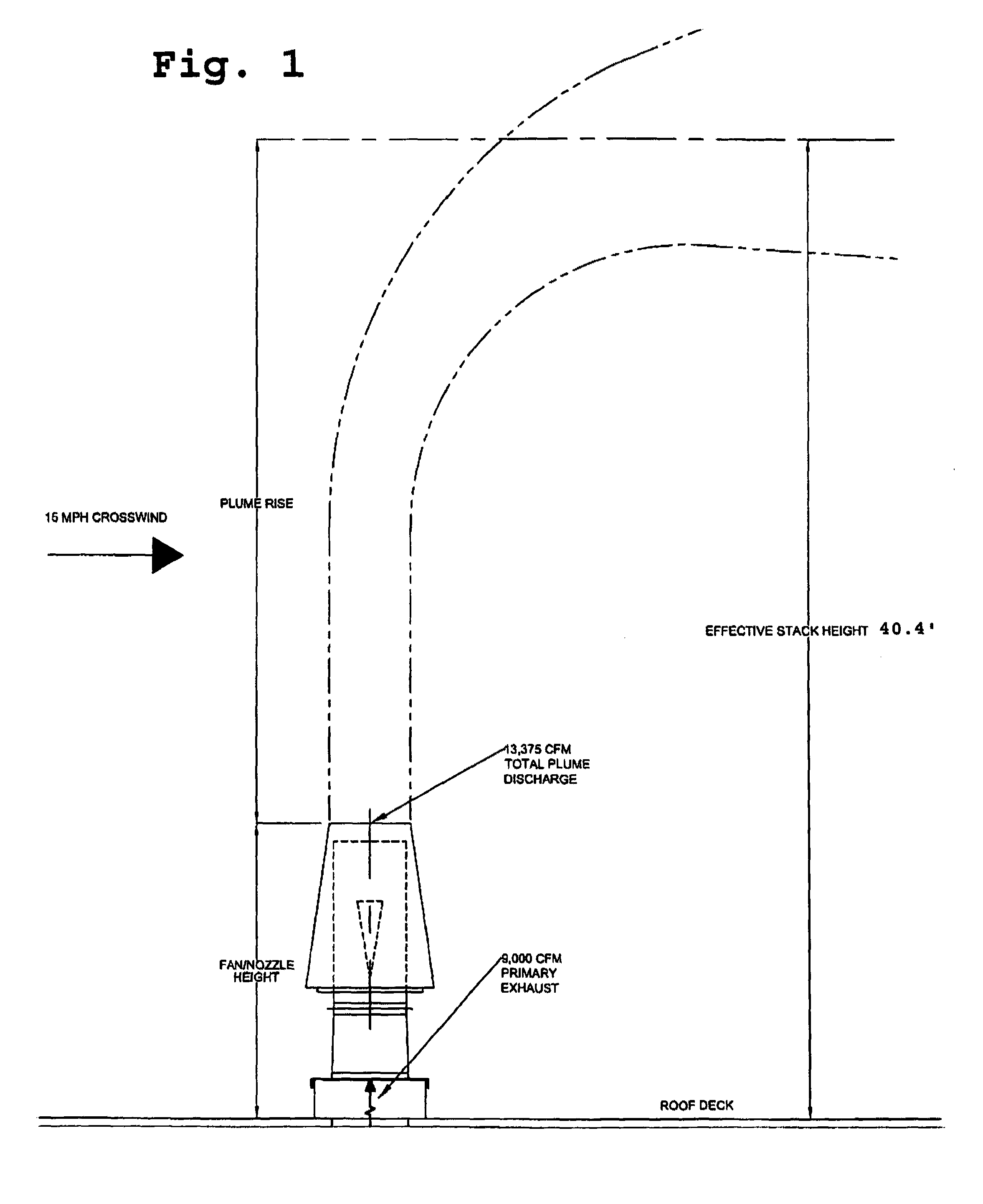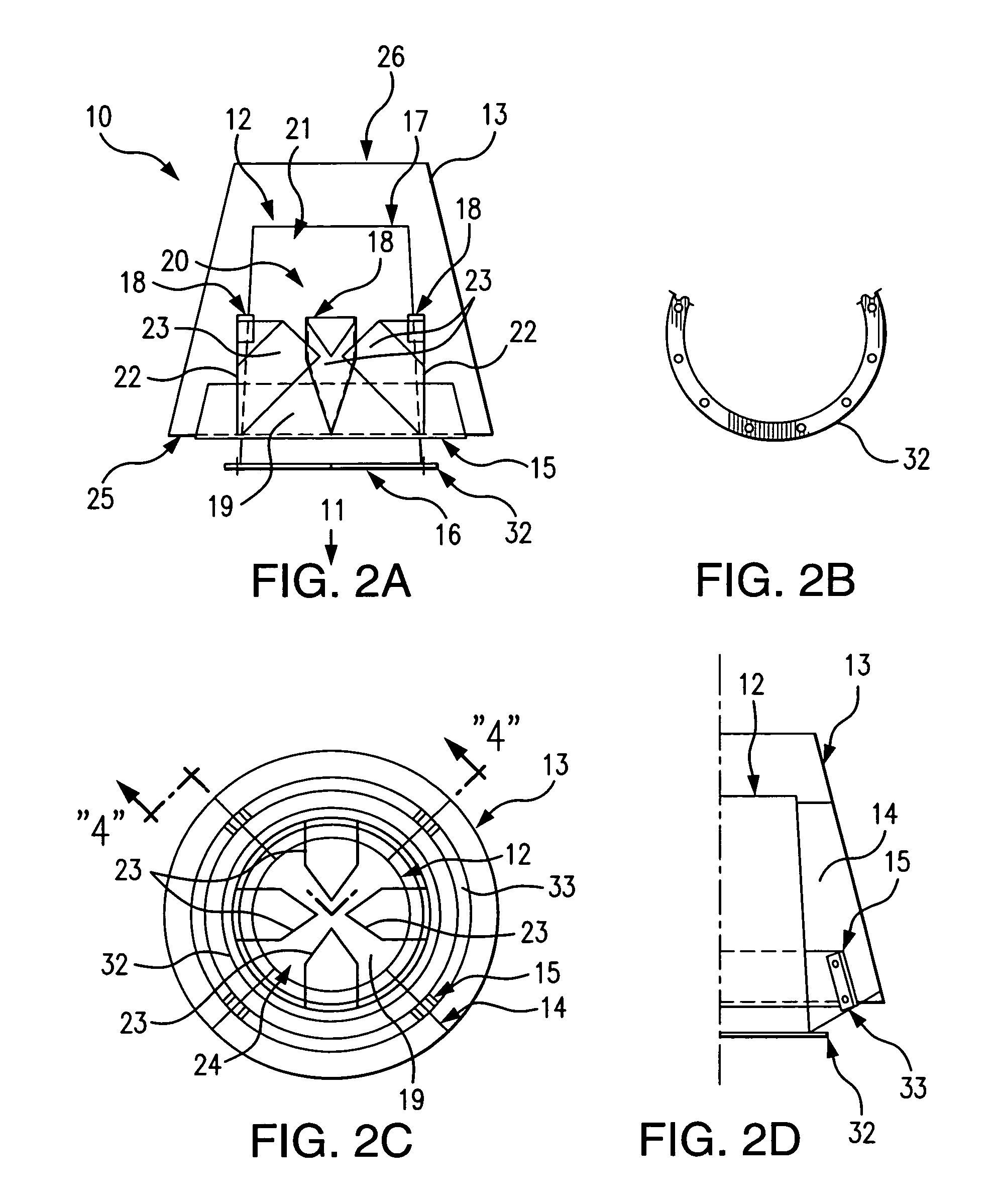Aspirating induction nozzle
a technology of induction nozzle and inlet air, which is applied in the direction of ventilation system, combustion type, heating type, etc., can solve the problems of visual unattractiveness, impairing the performance of the nozzle discharge, and the industry has not yet recognized the effect, so as to reduce the turbulence of the secondary induced ambient air flow, increase the flow of ambient air, and reduce the effect of dilution ratio
- Summary
- Abstract
- Description
- Claims
- Application Information
AI Technical Summary
Benefits of technology
Problems solved by technology
Method used
Image
Examples
Embodiment Construction
[0055]Referring to FIGS. 2A through 2D, an aspirating induction nozzle assembly 10 is designed for vertical connection to an exhaust gas outlet 11 by means of a connecting flange 32. The nozzle assembly 10 comprises a tubular or frusto-conical central nozzle 12, a long frusto-conical wind band 13, which is attached in annular spaced relation to the central nozzle 12 by multiple mounting brackets 14, and a short frusto-conical guide vane 15, which is attached in annular spaced relation by the mounting brackets 14 between the central nozzle 12 and the wind band 13. Multiple guide vane clips 33 are used to attach the guide vane 15 to the mounting brackets 14.
[0056]The central nozzle 12 comprises a nozzle inlet opening 16 at the lower end, a nozzle discharge opening 17 at the upper end, multiple ambient air induction ports 18, a primary effluent passage 19, a mixing zone 20 and a developing zone 21. Each of the induction ports 18 has an induction inlet 22 and an induction outlet 23. The...
PUM
 Login to View More
Login to View More Abstract
Description
Claims
Application Information
 Login to View More
Login to View More - R&D
- Intellectual Property
- Life Sciences
- Materials
- Tech Scout
- Unparalleled Data Quality
- Higher Quality Content
- 60% Fewer Hallucinations
Browse by: Latest US Patents, China's latest patents, Technical Efficacy Thesaurus, Application Domain, Technology Topic, Popular Technical Reports.
© 2025 PatSnap. All rights reserved.Legal|Privacy policy|Modern Slavery Act Transparency Statement|Sitemap|About US| Contact US: help@patsnap.com



